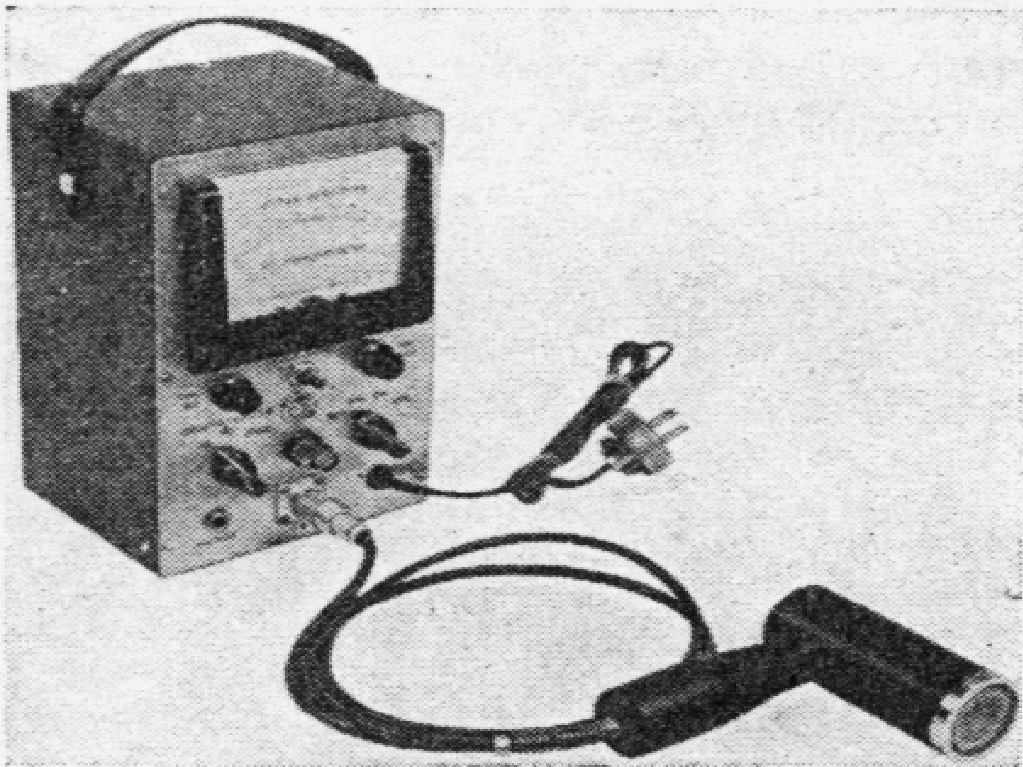
Radio Corporation of America (RCA)
The Radio Corporation of America, Engineering Products Department, was located in Camden, NJ and later in Harrison, NJ in 1955. In 1948, an RCA unit AN/PDR-11 from the Navy Bureau of Ships was used at the Operation Sandstone Test. The unit was a photomultiplier alpha detector.
Need photo
RCA AN/PDR-11 1948
The EMA-6 was introduced by the RCA Victor Division as a count rate meter with a GM tube in external probe in 1949. It was self-calibrating by means of the rectified pulses from a 60-cycle power line. It Contains a 0-2.4 kV power supply to allow use with a wide variety of probes. It operates from AC only. It can be used as a monitor or assay device. It comes with six feet of coaxial cable. Scale ranges from 10, 100 and 1000 cps. It measured 13.5 x 6.75 x 9.5 and weighs 10 lbs.

RCA Model EMA-6 1949
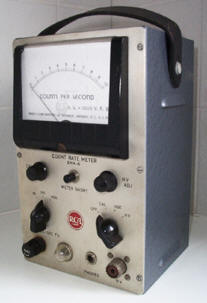
RCA Model EMA-6
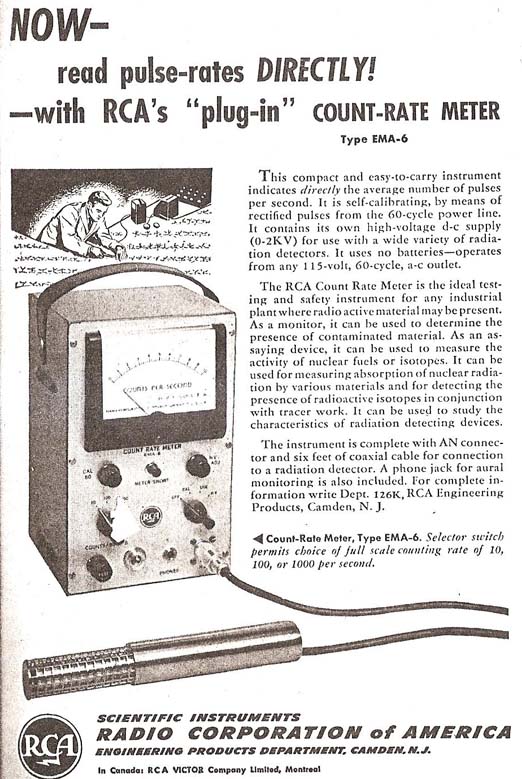
RCA Model EMA-6 Ad 1956
RCA offered a scintillation counter in 1951 for the Navy Bureau of Ships. It was an ultra-sensitive instrument with ranges of 10, 100 and 1,000 cps. The scale was a DC microammeter from 0-10. It was a general purpose gamma ray detector for hazards. The Navy had put constraints on the instrument to have a range from 5 mR to 500 R/h, a weight of less than 8 lbs. with batteries, and continuous operation of 40 hours. The unit has an external scintillation probe with a phosphor crystal. The unit was designed to be ultra-sensitive to go down to 0.1 mR/h.

RCA Model EMA Scintillator 1951
RCA offered the WF series Geiger counters in 1955. The Models WF-10A and WF-11A are the simplest and designed for weekend and vacationing prospectors. They all had internal GM tube and an intensity scale, light and headphones. The Models WF-12A and WF-14A are more versatile with an external probe for examining crevices and test bore holes. The Model WF-14A had a more sensitive bismuth-type GM tube. The Model WF-15A was a super sensitive unit containing ten GM tubes and is suitable for aerial or mobile prospecting. The most sensitive is the Model WF-16A which can quantitatively measure radiation for aerial or mobile surveying. It has ten bismuth-type GM tubes.
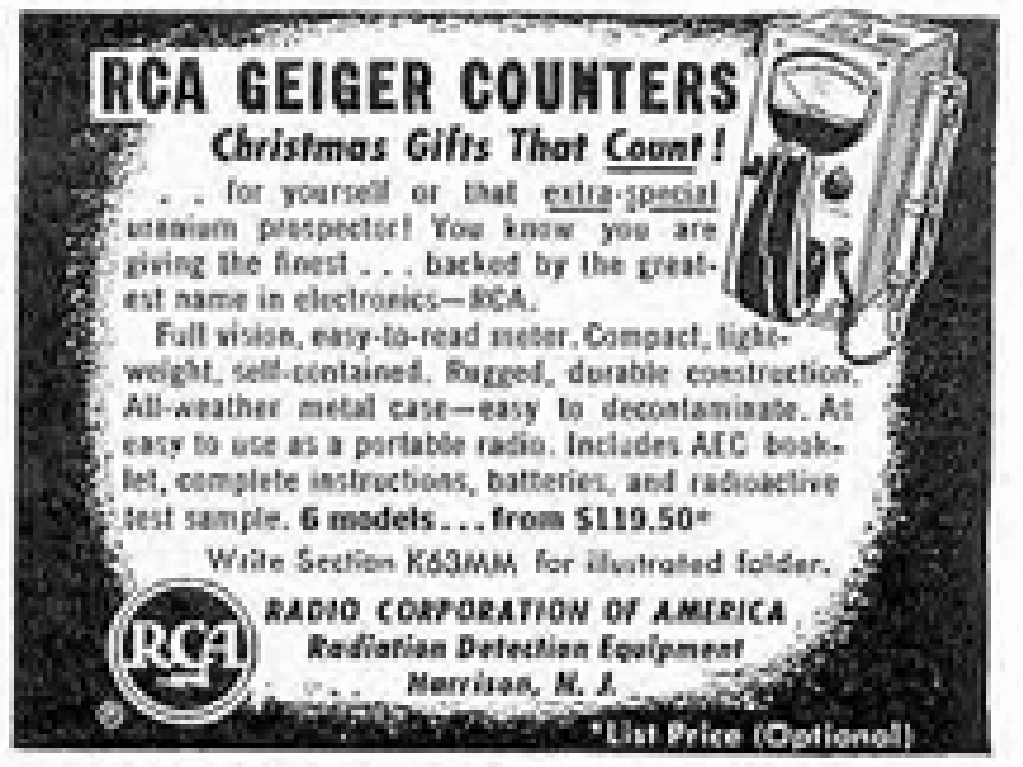
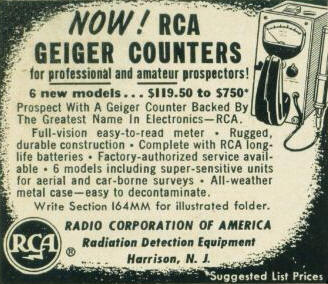
RCA Geiger Counter Ads 1955
The following chart gives the specifications for some of the RCA WF series.

Chart of RCA WF series specifications 1950's
The WF-10A is a lightweight, compact portable instrument, suited for the amateur prospector. It's as "simple to operate as a portable radio". The WF-10A has three counting ranges: 100, 1,000 and 10,000 cpm. The unit measures 7-3/4" x 8-1/2" x 3-1/2" and weighs 5 pounds, including batteries. The WF-10A indicates the presence of radioactivity in three ways - by meter which registers relative intensity in cpm, by neon light and by headphone. The WF-10A is housed in a weather-proof aluminum case which can be decontaminated simply by wiping with a damp cloth. The WF-10A has a built Geiger counter tube. It takes two 67.5V batteries and 3 D-cell batteries. The RCA WF-10A was designed for both amateur and professional use. It sold for $119.50 in 1955 and $29.95 in 1958.
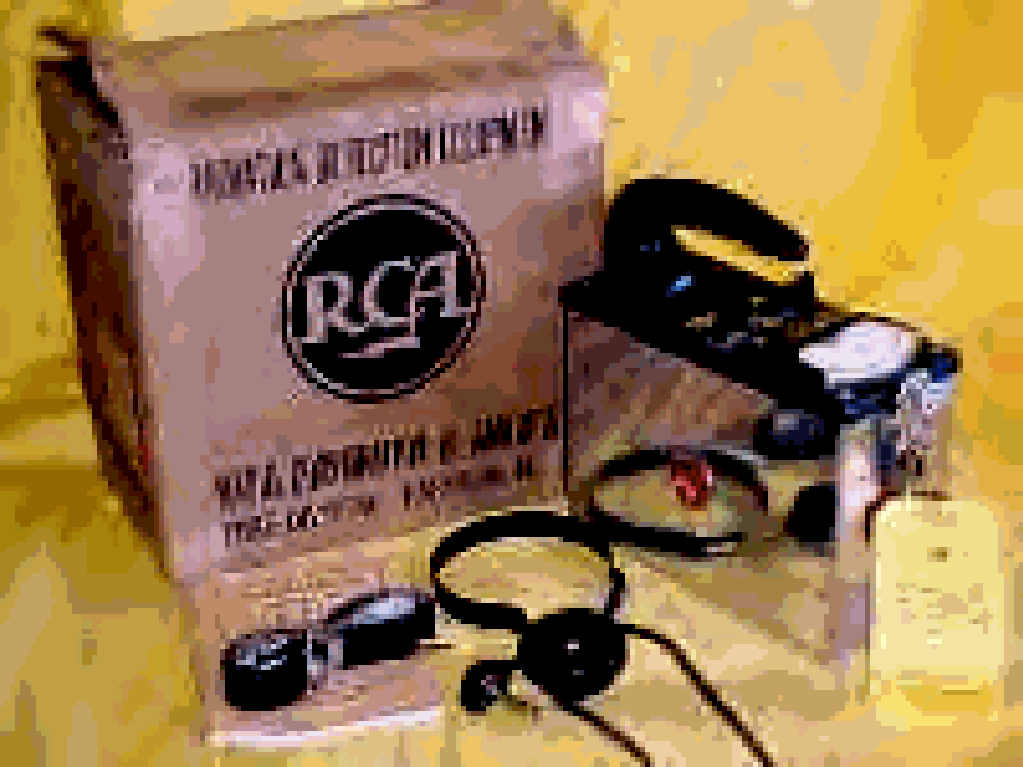
RCA WF-10A Kit
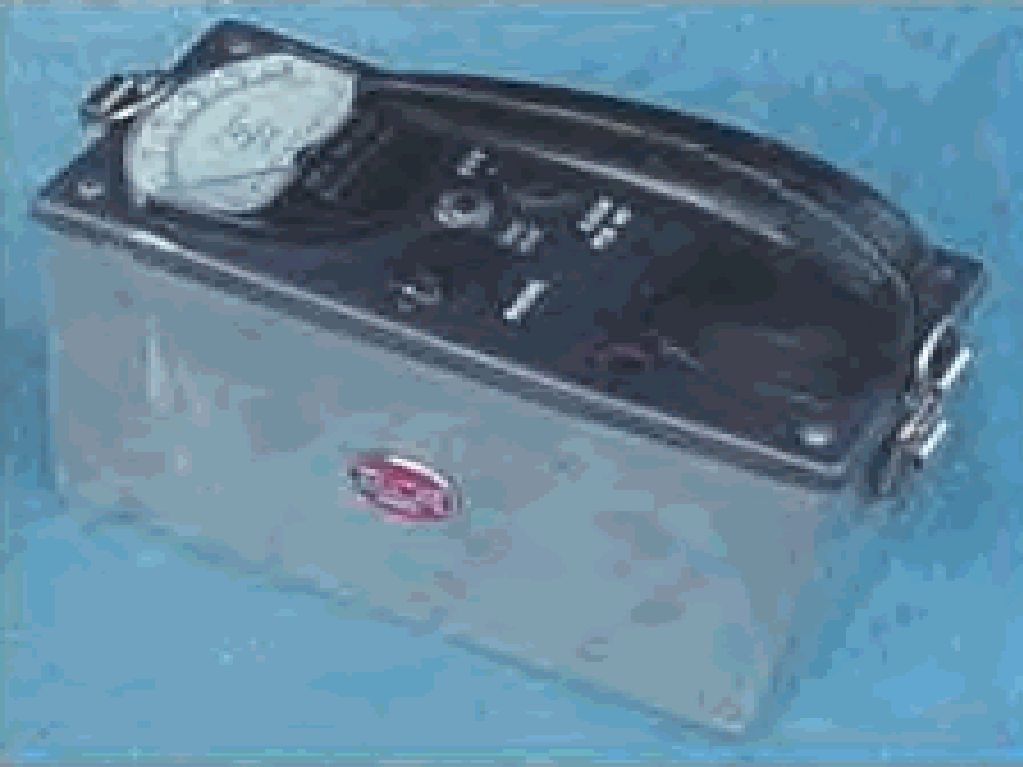
RCA WF-10A

RCA Ad 1950's
The WF-11A was similar to the WF-10A but employs the extra-sensitive bismuth-type Geiger counter tube. It has ranges from 200, 2,000 and 20,000 cpm. It sold complete in 1955 for $154.50 and $37.95 in 1958.
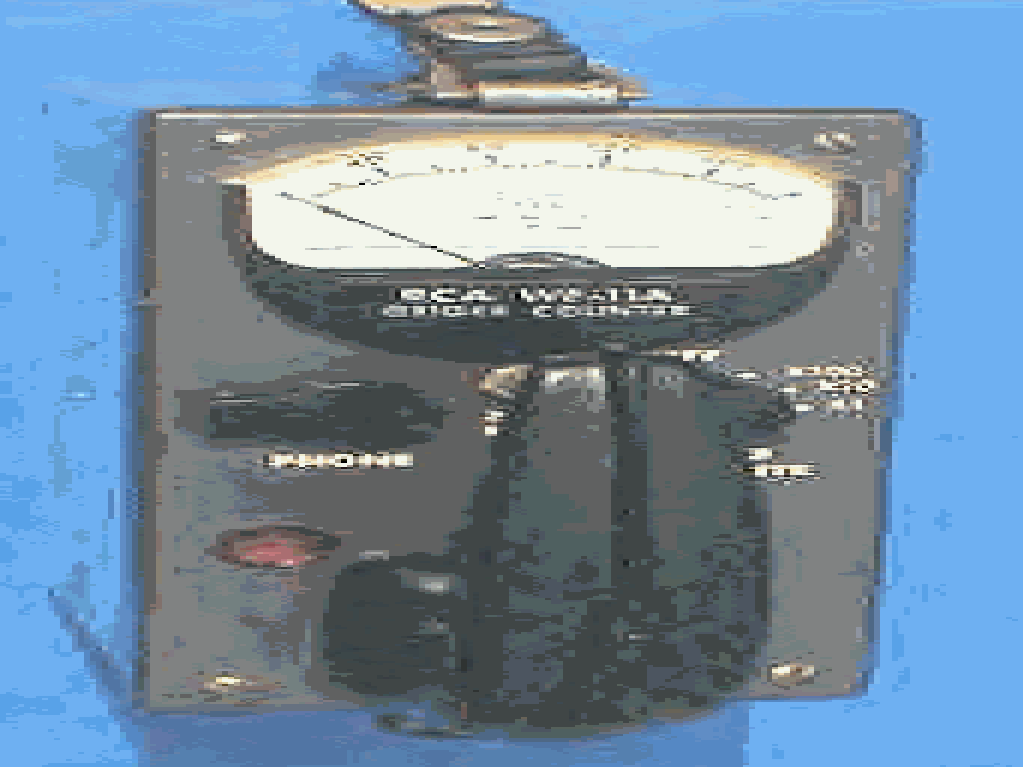
RCA Model WF-11A
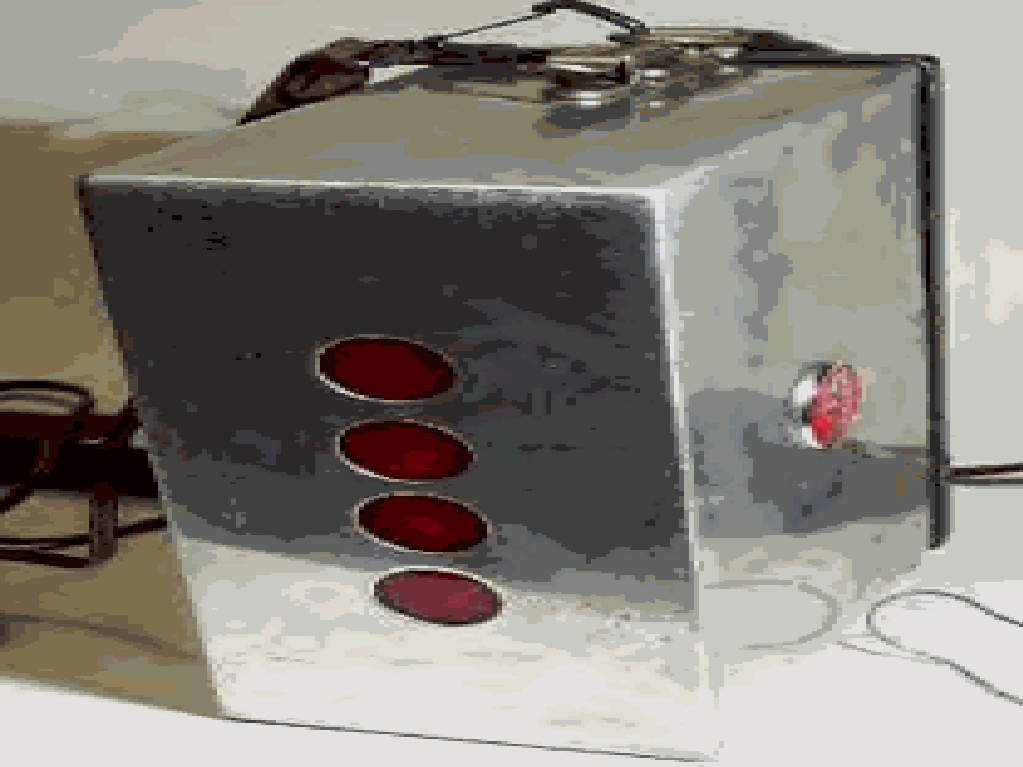
RCA WF-11A (same on WF-10A)
The WF-11A is switchable in cpm from X1, X10 and X100 with a meter range from 0-200. A neon bulb flashes when each particle is detected and a click is heard in the headphone. It has an aluminum case.
The WF12A is similar to the WF10A, except it has an external probe. It has a Geiger counter in an external probe. It had three way indication via neon flasher, meter and headphone. It sold for $149.50 in 1955 and $34.95 in 1958. It weighs 5.5 lbs., measured 7-1/4" x 3-1/2" x 7-1/2" and came with test sample. It can measures three ranges from 100, 1000, and 10,000 cpm.
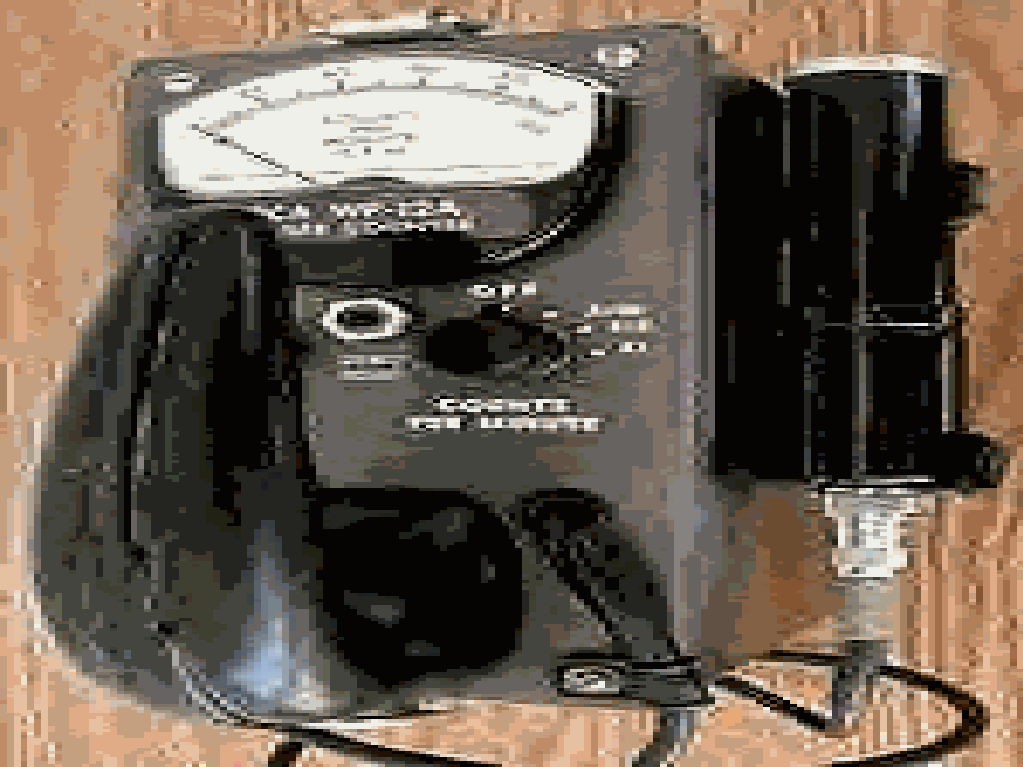
RCA Model WF-12A

RCA WF-12A
The RCA WF-14A was similar to the WF-12A but employs the extra sensitive bismuth-type Geiger counter. The external Geiger- Muller tube was enclosed in a red aluminum housing and measures 5.5 long by 1.5 diameter. It has three ranges from 0-20,000 cpm with adjustments of x1, x10 and x100. The case bottom is stainless steel with an aluminum top. It uses three 1.5 and two 67.5 volt batteries. It measured 7-3/4 x3.5x7-3/4. It sold for $186 in 1955.
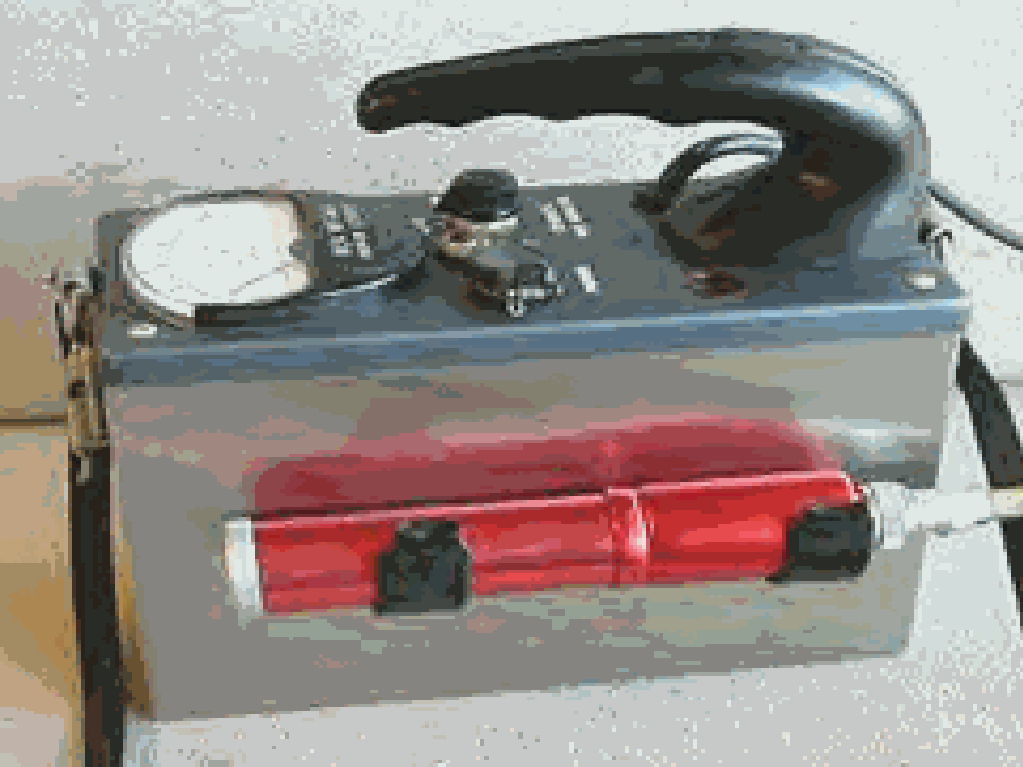
RCA Model WF-14A

RCA Model WF-14A
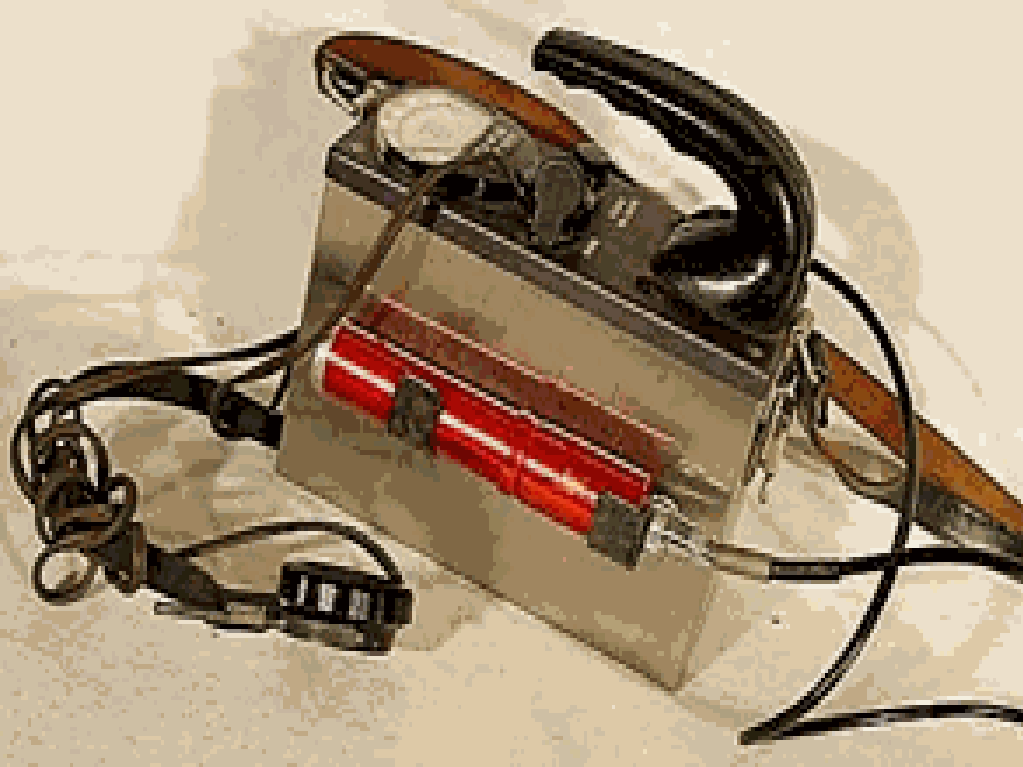
RCA Model WF-14A
The WF-15A was introduced in 1955. It came with 10 sensitive Geiger tubes. It had three ranges from 1000, 10000, and 100,000 cpm. It could be used for aerial surveys up to 1000. For carborne surveys, it indicates radiation up to 500 on each side. It had a stainless steel case and weighed 8 lbs. It sold for $475 in 1955 and later in 1958 for $475 but was often advertised at sale prices down to $99.50 near the end of the prospecting era.
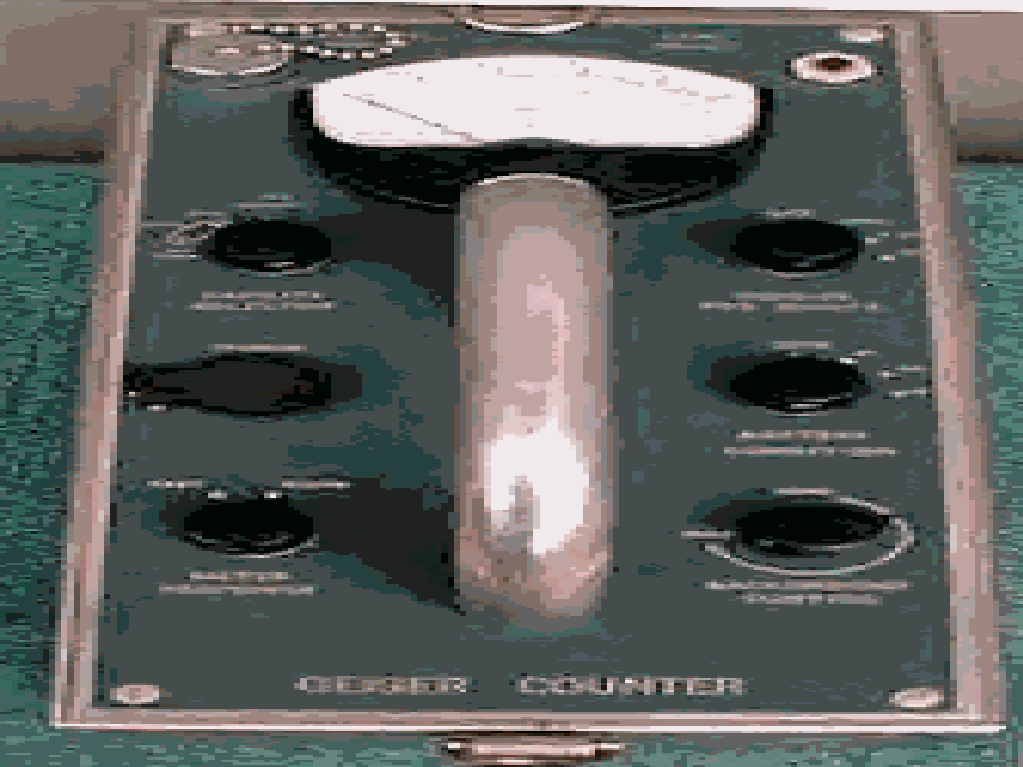
RCA Model WF-15A

RCA Model WF-15A showing geiger tube array

RCA Model WF-15A and WF-16A Ad 1956
The WF-16A was the most sensitive of the RCA counters. It came complete with 10 bismuth-type Geiger tubes inside the case. It has 3 ranges from 2000, 20000, and 200,000 cpm. A two step switch allows for slow and fast response. It has a connector for attaching probe with extension up to 500. It could be used for aerial or carborne surveys. The unit measures 11" x 4-7/8" x 7-1/2" and weighs 8 lbs. It sold for $750 in 1955.
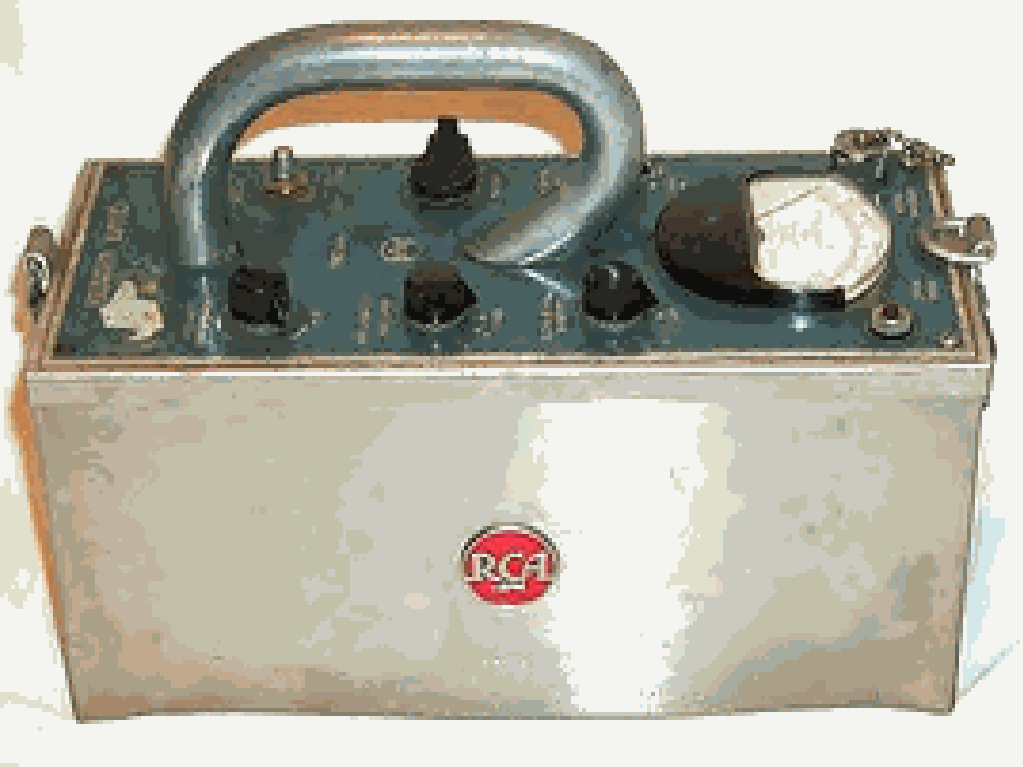
RCA Model WF-16A
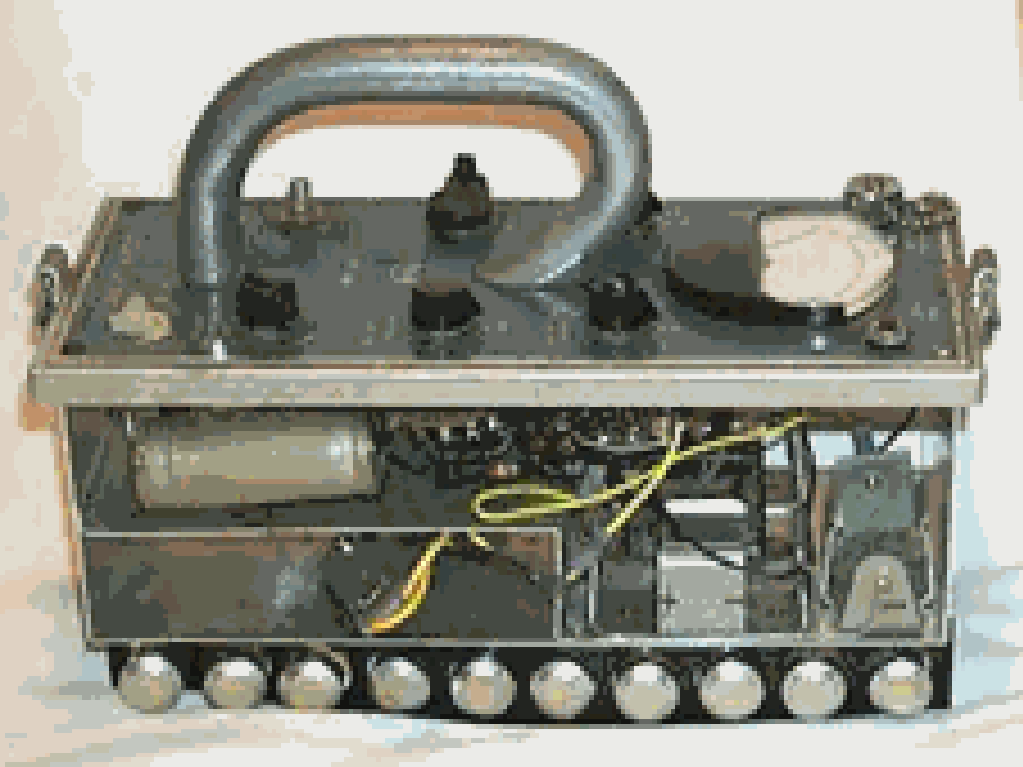
RCA Model WF-16A
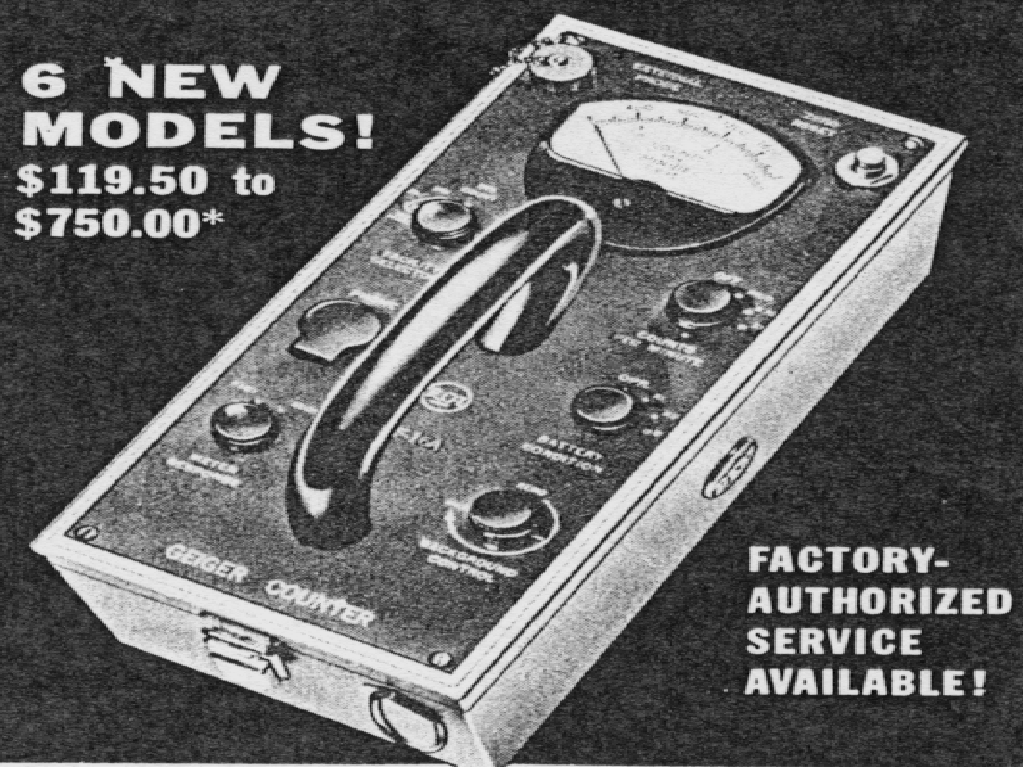
RCA Model WF-16A 1955
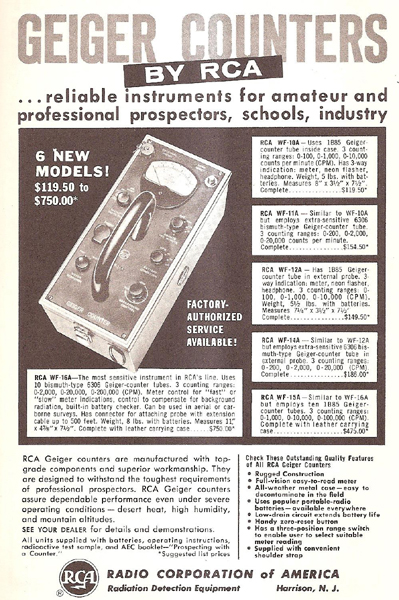
RCA Geiger Counter Ad 1955
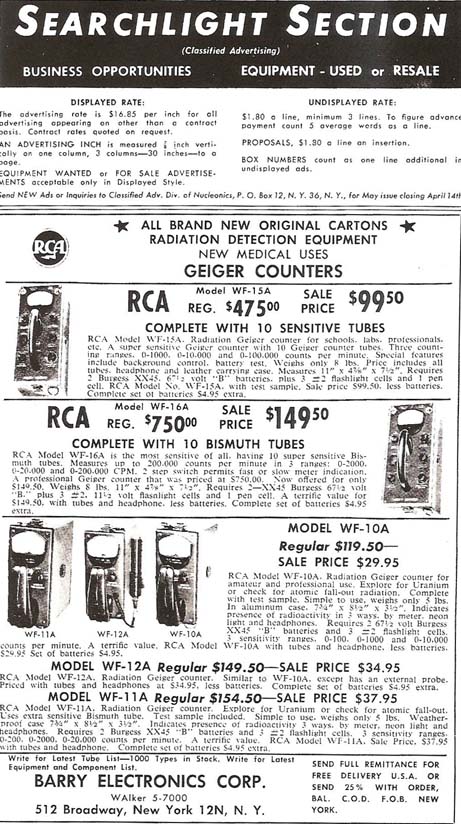
RCA Geiger Counter Ad 1958
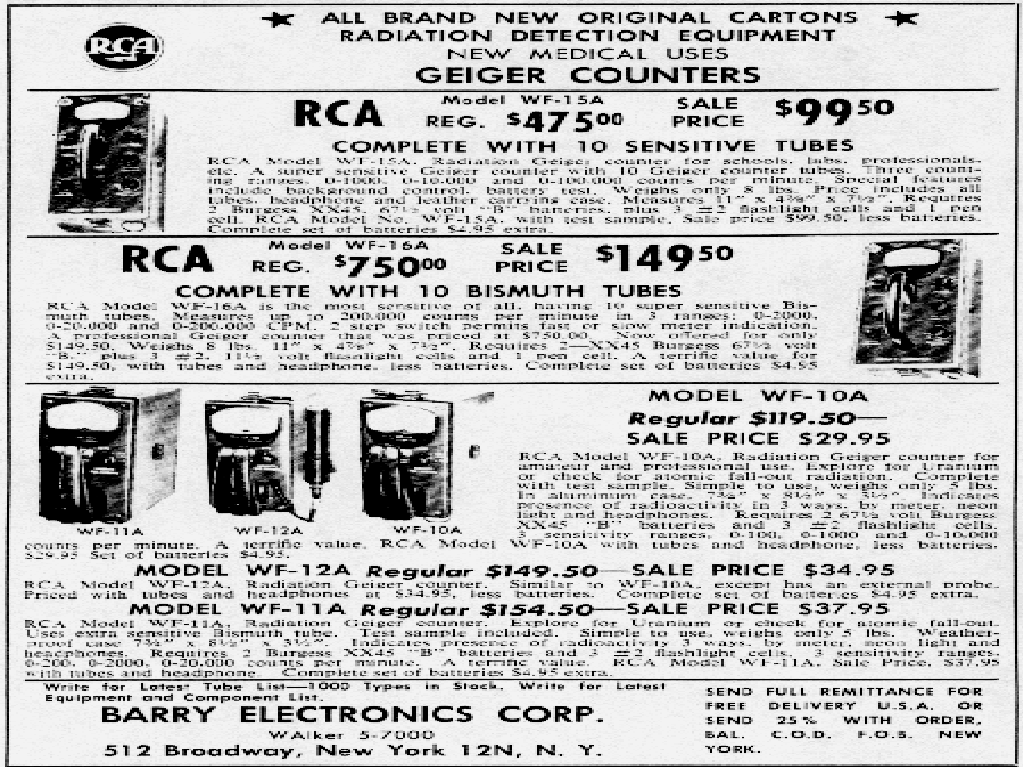
RCA Series Ad 1958
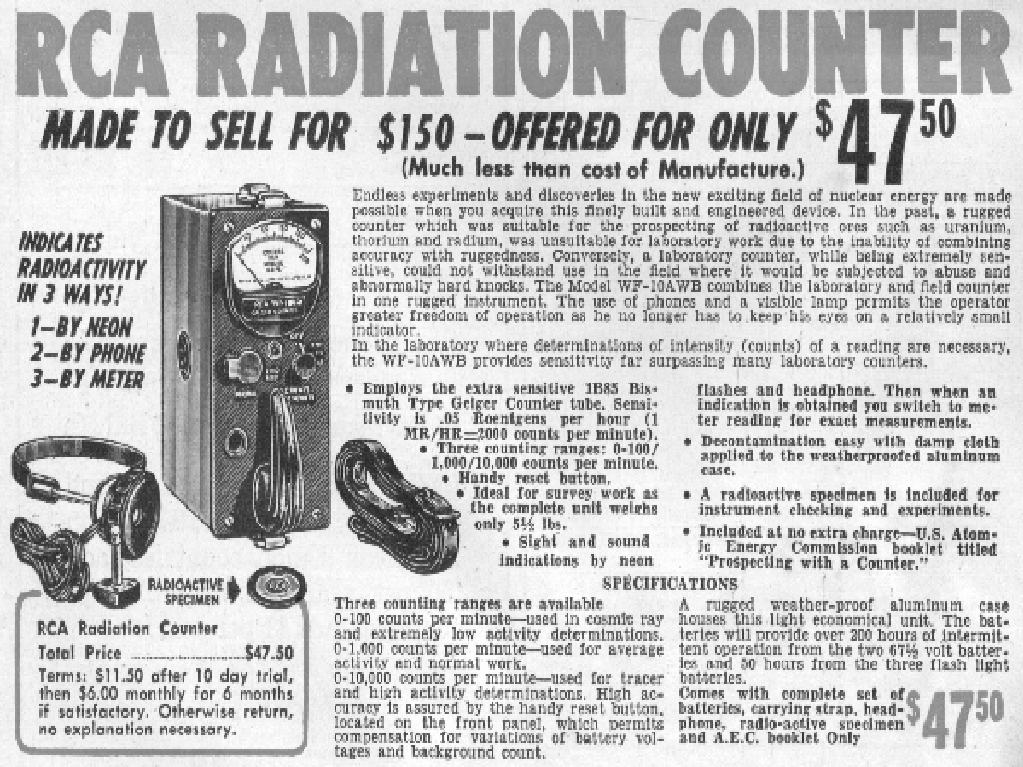
RCA Ad 1960